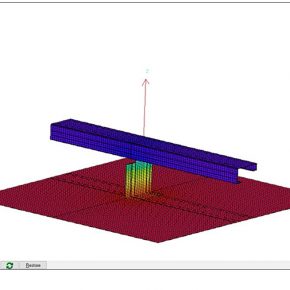
GUEST ARTICLE: Exponential rise in global urban population to present lucrative opportunities for construction industry
Trends within the global construction market have evolved at a rapid pace over the past few decades. Progress in technology, significant improvements in construction techniques, and use of superior grades of raw materials are some of the factors that have boosted the construction market in the past few years.
While economic factors remain pivotal in the growth of the construction sector across the world, the rapidly growing global population is expected to create a substantial demand for heavy & civil engineering as well as general construction worldwide.
According to a publication released by the World Economic Forum, the global urban population is increasing by around 200,000 per day. Furthermore, the publication also stated that the global urban population is expected to grow past the 6 billion mark by 2045, which in turn is expected to put significant pressure on the construction market.
In order to support this influx of people in urban areas of the world, significant rise in the number of industrial, residential, and commercial projects is expected. Additionally, the significant increase in the number of general construction projects will influence the construction of civil projects, including railways, airports, roads, bridges, etc. While other industrial verticals, such as agriculture, retail, and manufacturing, among others, were quick to adopt evolving technologies, the construction market remained behind. However, at present, stakeholders are focusing toward improving productivity and saving cost by showing interest in digital technologies.
Digital technologies have played an imperative role in transforming a range of industry verticals. Over the past few decades, innovations and technological advancements have led to improved productivity levels, high sustainability, and redefined the skill sets of the labor involved. However, around the same time, within the construction market, productivity levels reached stagnation, due to high dependability on manual labor and mechanical technology, and unwillingness to change conventional business and operating models.
Yet, digital technologies are gradually entering the construction market, and are expected to play a key role in transforming how various real estate and infrastructure development projects are constructed, designed, maintained, and operated. Some of the new technologies that are anticipated to gain significant popularity in the near future include prefabrication, wireless sensors, building information modeling (BIM), robotics and automated equipment, and 3D printing, among others. These novel technologies are compelling stakeholders in the construction market to adopt new construction practices.
The construction market is expected to witness steady growth during the forecast period, as more number of countries are gearing up to meet the demand of the growing urban population. Furthermore, while the developed economies are showing no signs of slowing down, the developing nations across the globe are also increasingly spending on a range of construction projects.
In North America, particularly in the U.S., infrastructure development pertaining to transportation is expected to provide an impetus for growth of the construction market. For instance, a whopping ~US$ 8 Bn was allocated for the redevelopment of LaGuardia Airport – a project in which a new airport is being constructed next to the already existing airport. Adoption of latest technologies in the construction market is expected to create significant opportunities for stakeholders involved in the current market landscape.
Governments across the world are increasingly spending on a range of mega construction projects. For instance, the South-North Water Transfer Project, China, has been given a staggering 48-years for its completion – a project which will enable the population in north China to gain easier access to water.
Moreover, the ongoing construction of Dubailand is a whopping 278 square kilometer project, which is expected to include a number of hotels, theme parks, and recreational buildings.
Latest news

26th July 2024
Enfield Speciality Doors completes world-class project for Atlas Copco HQ
A rundown office and warehouse building completely transformed into a modern headquarters for Atlas Copco has been fitted with more than 120 internal fire doors from Enfield Speciality Doors.
Posted in Access Control & Door Entry Systems, Articles, Building Industry News, Building Products & Structures, Building Systems, Case Studies, Doors, Interior Design & Construction, Interiors, Posts, Restoration & Refurbishment, Retrofit & Renovation, Security and Fire Protection, Sustainability & Energy Efficiency, Timber Buildings and Timber Products, Wooden products
26th July 2024
Abloy UK launches new white paper
Abloy UK, a leading provider of security and access control solutions, has launched a new white paper.
Posted in Access Control & Door Entry Systems, Architectural Ironmongery, Articles, Building Industry News, Building Products & Structures, Building Services, Doors, Facility Management & Building Services, Health & Safety, Information Technology, Innovations & New Products, Publications, Research & Materials Testing, Security and Fire Protection
26th July 2024
MCRMA Member Profile: David Roy, Director of Roofconsult
David Roy of MCRMA member company Roofconsult has more than 50 years’ experience to draw upon working in the building envelope sector and a unique perspective on how it has changed in that time.
Posted in Articles, BIM, Infrastructure & CAD Software, Building Associations & Institutes, Building Industry News, Building Products & Structures, Building Services, Building Systems, Cladding, Information Technology, Restoration & Refurbishment, Retrofit & Renovation, Roofs, Walls
26th July 2024
Strand: Enhancing Door Functionality and Safety
Craig Fox, Sales Director for Strand Hardware, outlines how door industry professionals might apply door limiting stays…
Posted in Architectural Ironmongery, Articles, Building Industry News, Building Products & Structures, Building Services, Doors, Facility Management & Building Services, Health & Safety, Restoration & Refurbishment, Retrofit & Renovation
 Sign up:
Sign up: